
With our premature Spring season came warmer weather, which meant the snowpack in the Cascades started to go early. With no rain in the forecast and the snow already melting, we knew it was time to start making the weekly trips up to the Columbia Gorge for the classic snowmelt runs..
The Green Truss Section of the White Salmon ( named for the green bridge at the put-in ) is one of the finest runs anywhere, featuring a nearly non-stop barrage of excellent rapids and a very long season. This river runs from rain all winter long, then when the summer comes it has a long, sustained snowmelt event that is bolstered by a huge aquifer that pours spring water into the river along the run.
We met at Lewis and Clarke State Park gravel parking area on the Sandy river. When I got there Pete unveiled 'The Armor Plate', his latest round of patches on his broken Embudo. Basically he cut the bottom out of his old Micro 240 (which he crushed in Salmon Canyon), then he screwed square sections of the 240 to the inside and outside of the Salto, added a little foam and glue as a buffer, and voila!
Now THAT'S a PATCH!!
Fifth-degree blackboat repair expert Pete Giordano inspects his latest cutting-edge innovation in patching technology, known as 'Pete's Brute-Force Ballistic Plate Patch Method!!™ ..' or PBFBPPM!!™ for short.. Remember, you saw it here first!! ( Now the biggest question was, would the PBRBPPM!!™ patch last the day, or would Pete be sinking by the time we reached Double Drop ?!? )
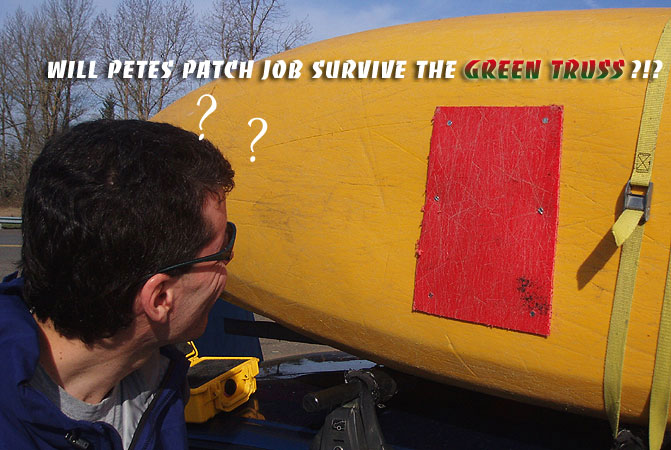
The view of the put-in for the Green Truss section of the White Salmon, taken from the bridge over the canyon.
Downstream from the put-in we enjoyed the array of super-fun rapids this run is known for. Soon we arrived at Meatball, which we all ran through the slot down the right side as usual. Just downstream from the Meatball is Bob's Falls, a drop that probably has more swims to it's name than any other on this run.
James went first, and had a nice line..
James Bagley Jr. digs in for the boof at Bob's Falls, a drop that closely resembles a low-head dam and probably has more swims to it's credit than any other on this run..
EJ was up next, got stopped by the hole, and did a little rodeo time before surfing his way out on the right..
EJ gets a little rodeo creeking in at the base of Bob's Falls.. he managed to work his way out of the hole on the right side..
At this point I had moved downstream to get some photos, so I got some good shots when Pete ran the drop and got worked over in the hole too.. Bob's was in top form on this day!!
Pete battles the hole at Bob's Falls..
Downstream are some more fun drops leading up to 25-foot tall Big Brother. None of us felt like running the big one today, so we portaged down the left side. Pete and James decided they wanted to run Little Brother, so they did the partial portage, lowering down the fixed line and putting into the pool at the base of Big Brother..
James Bagley Jr. runs Little Brother..
A few hundred yards downstream from Little Brother is Double Drop. This 18-foot double falls is always a wild ride and tends to be somewhat random. You might run it straight, but you also might run it upside down, backwards, sideways, and (my all-time favorite) backwards-and-upside down! The key with Double Drop is just hit it with all you've got and hope for the best.. it'll probably just kick you right on through..
This was EJ's first attempt at Double Drop, and he had a great line, one of the best I have ever seen, with a nice boof at the top and then the usual random chaos in the bottom hole, after which he emerged with a big grin!
EJ has a great first run down Double Drop..
The next five photos are a close-up sequence of James Bagley Jr. running Double Drop..
Below Double Drop we cruised through the smaller drops leading up to the Zig-Zags, (Upper and Lower). When we arrived at Upper Zig-Zag we got out to scout on the right hand side. This rapid consists of two parts; a twisty, tricky lead-in move below which the water piles into the right wall, followed immediately by two closely-spaced pourovers between vertical walls. There is a nearly invisible log sieve against the river-left wall on the bottom hole in this rapid which fatally pinned Jack Kleinman on
February 15th, 1994.
EJ makes the crux move at Upper Zig-Zag rapid. Below here the river turns the corner and drops over two large holes. There is a log sieve against the left wall at the bottom pourover. All of the current pushes against this wall and into the sieve, so this is not the best place to join the Green Truss Swim Team.
EJ makes the move to the right at Upper Zig-Zag to avoid the undercut wall and logs around the corner.
The lower half of Upper Zig-Zag rapid.
Pete cruises through the bottom half of Upper Zig-Zag rapid.. The logs and wall on the river-left side pose a severe hazards for swimmers, giving those who flip in the first part of this rapid lots of extra incentive to stay in their boats!
Below Upper Zig Zag is lower Zig Zag, which has become dramatically easier since the floods of 2003 erased what used to be called 'The Move'. This rapid is now a relatively benign and boat-scoutable class III-IV drop instead of the chomping, stomping beast it used to be! The only trick with the current version of lower Zig-Zag is avoiding the large roostertail boulder in the middle of the river, which is fairly easy to do on the left hand side.
Below Zig-Zag the rapids mellows briefly and then picks up again as you approach BZ Falls, which we all portaged on this trip. Just below the falls is the take out at the BZ Corner raft launch site.
Pete's Patch survived! Yeah!!
A note on flows: The gauge on the Green Truss section can be deceptive if you don't know what to look for. The first half of the run (where the waterfalls are) has no spring fed component to it, so you rely on either snowmelt or rain to bring that part up. The lower half (where the Zig-Zags are) has the springs adding to it, so it tends to feel 'bigger' than the upper section.
photo by Pete Giordano
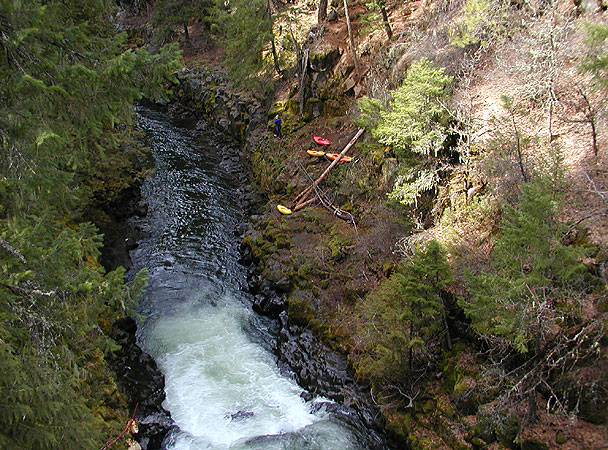
photo by Pete Giordano
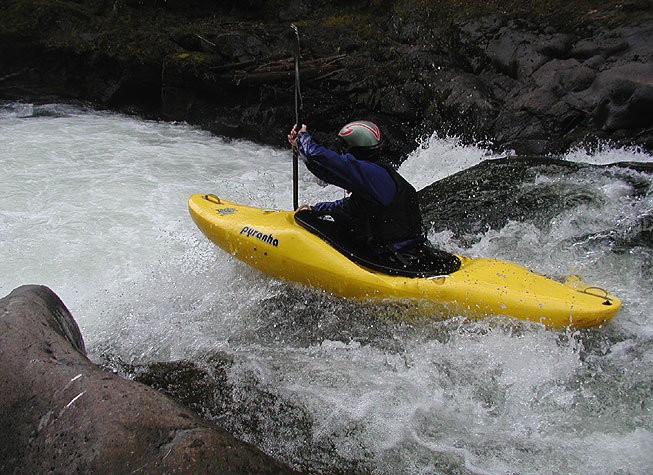
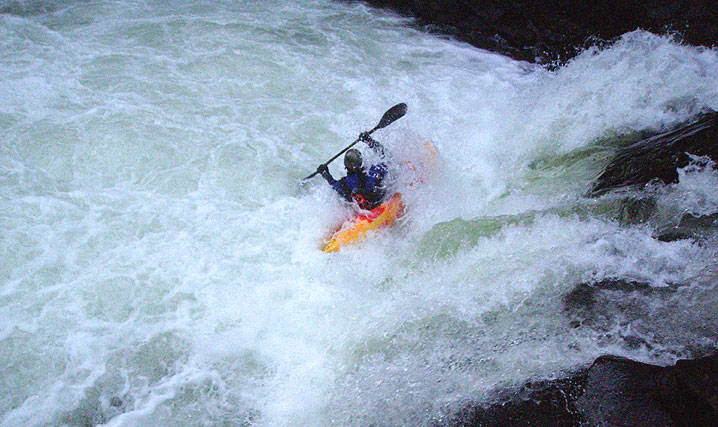
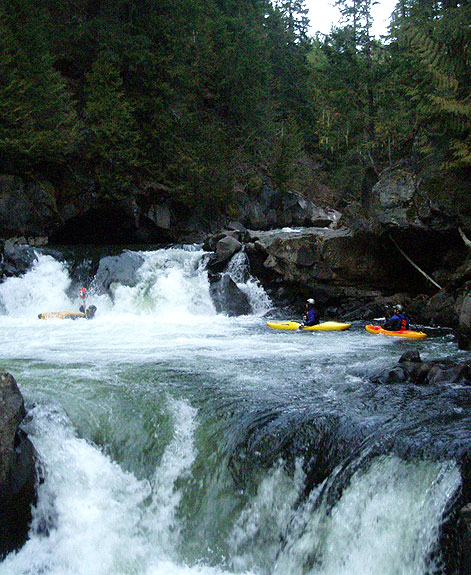
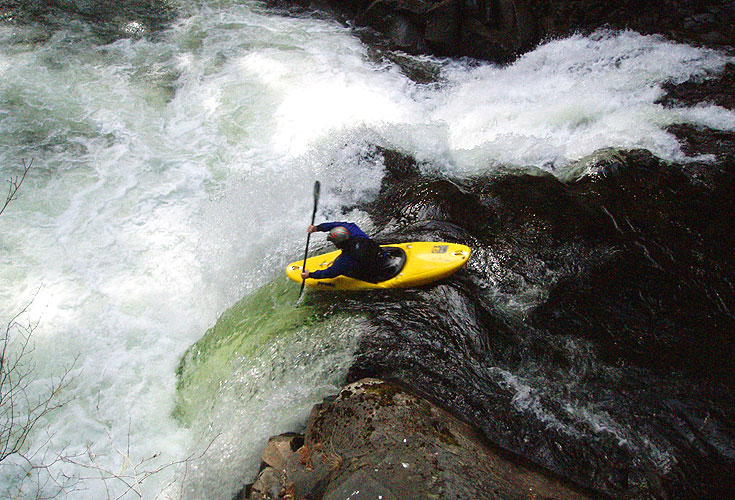
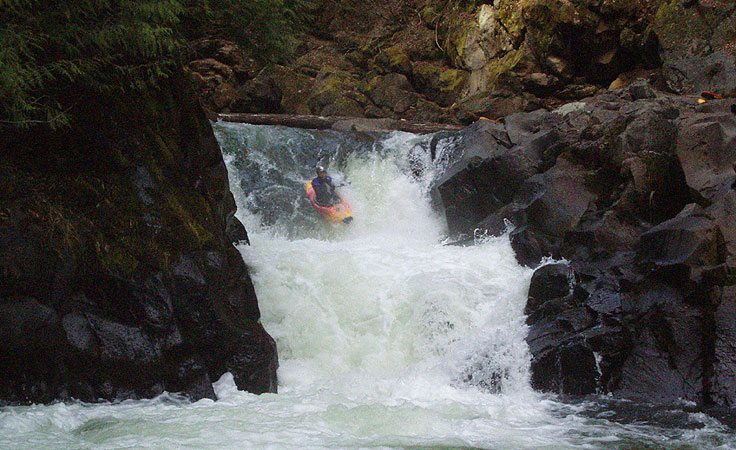
photos by Pete Giordano
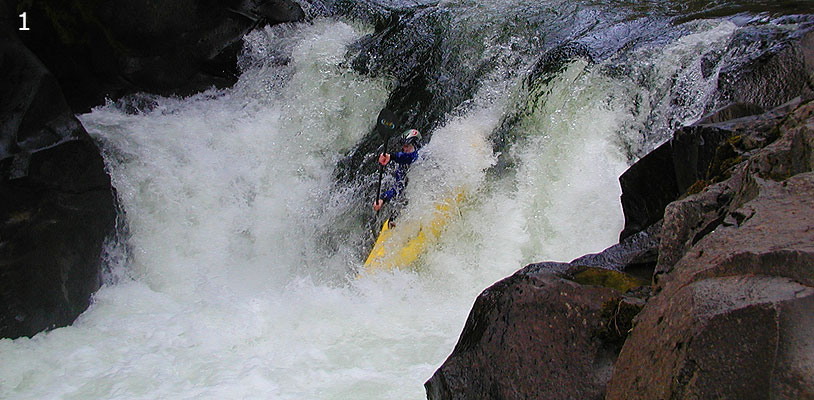
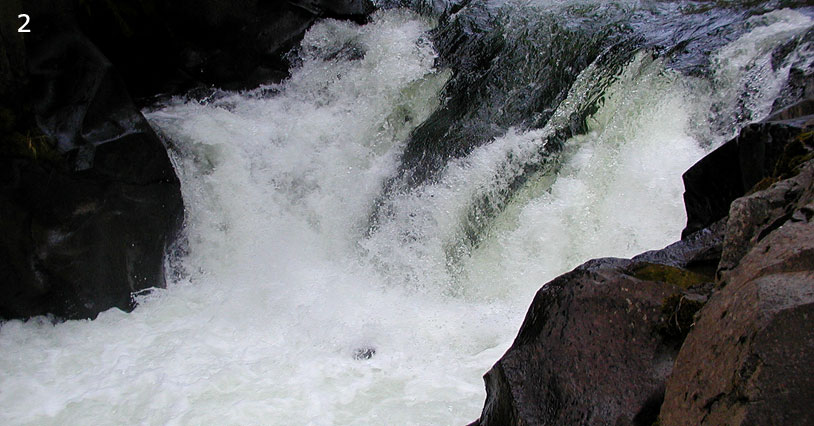
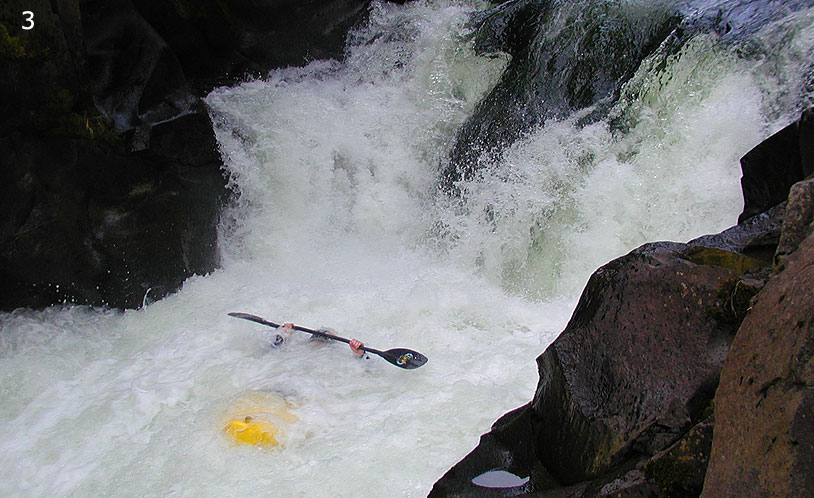
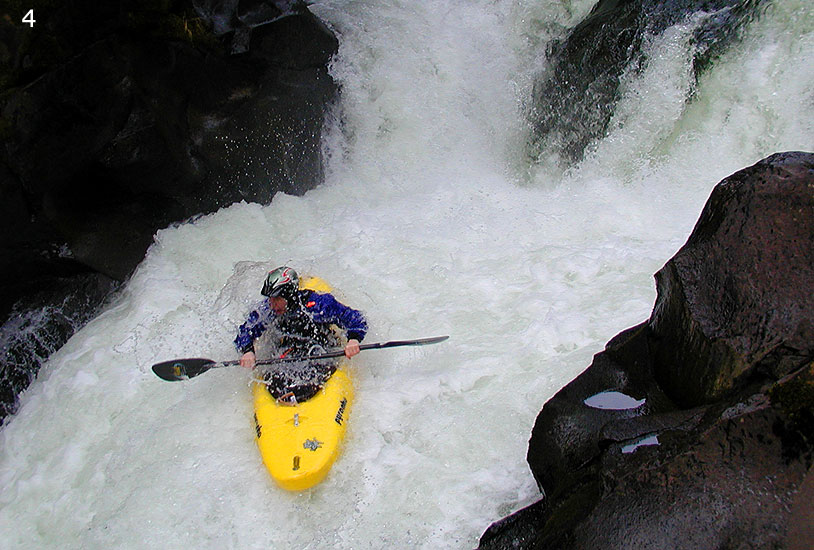
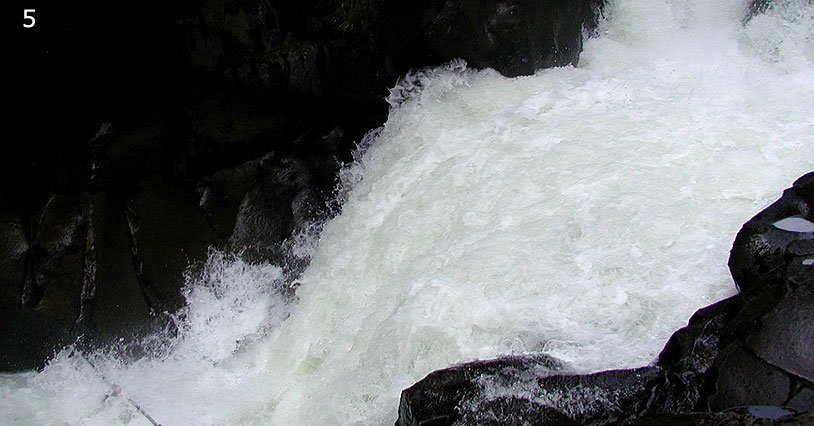
photo by Pete Giordano
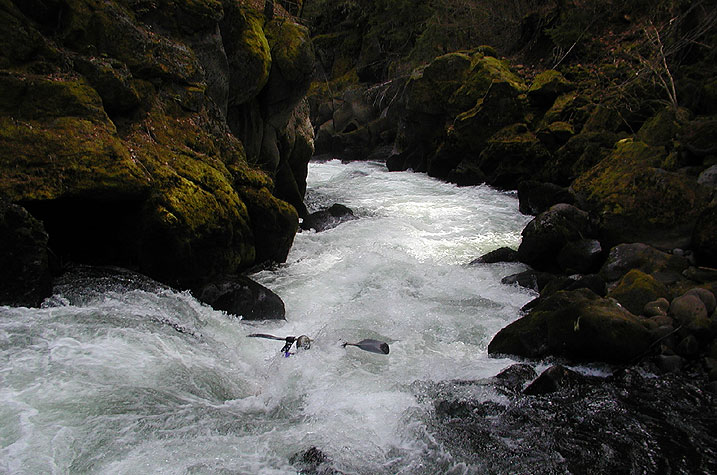
photo by Pete Giordano
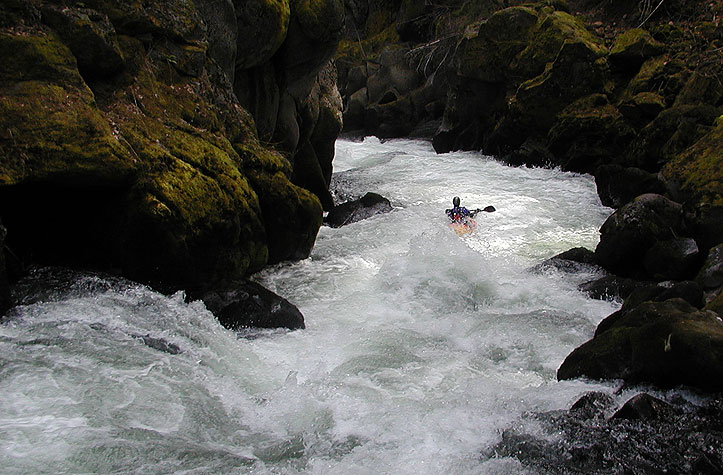
photo by Pete Giordano
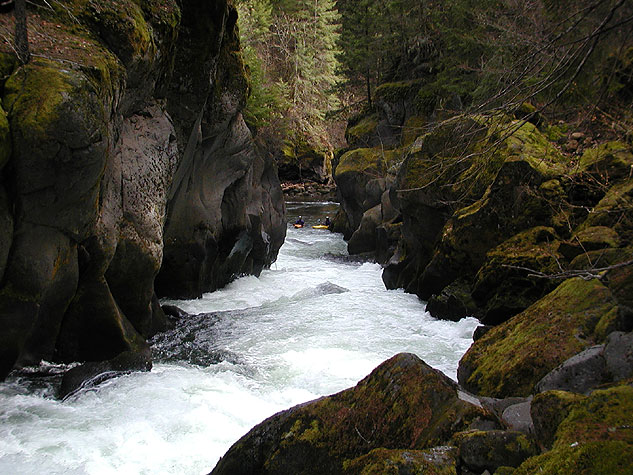
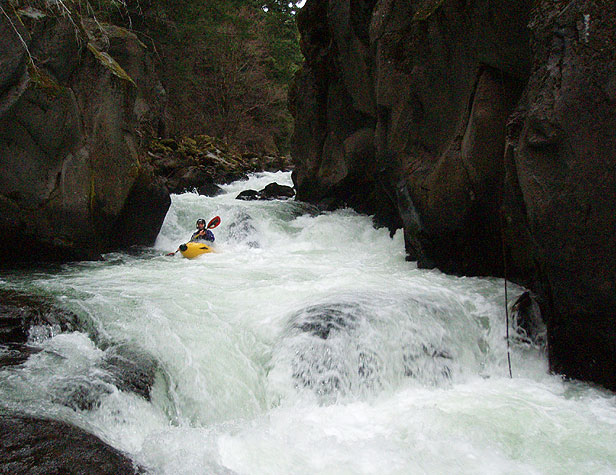
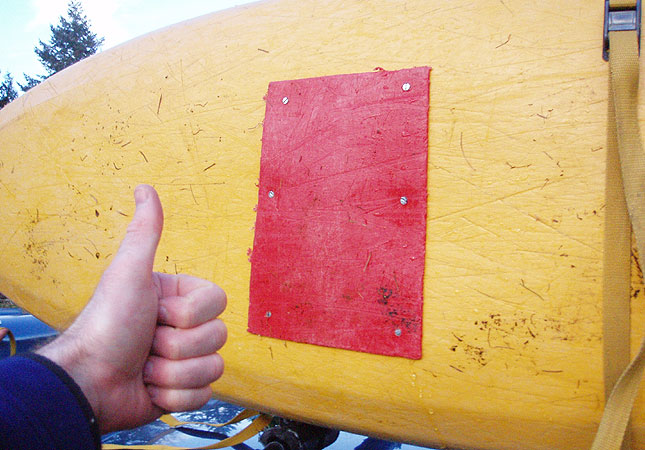
The wild card is snowmelt. Like the Upper Upper Cispus, the gauge for the Green Truss is located miles downstream from the run, so the gauge tends to be somewhat understated when there is a snowmelt event occurring vs. a purely rain-fed reading.